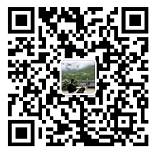Xinhua news agency, Beijing, September 11, new media special telegram American media said that scientists obtained the geological record of the worst day in the history of life on earth and found it after seabed drilling off the coast of Mexico. This unique geological record shows that 65 million years ago, an asteroid the size of a city hit the earth, destroying dinosaurs and three-quarters of life on earth.
According to the report on the website of the Wall Street Journal on September 9, scientists released the analysis of new rock samples collected from the Chicxulub crater. The analysis shows that the sedimentary rocks are distributed in layers. At the core of the impact, sedimentary rocks recorded the first day of the global catastrophe in minutes. Scientists say a huge asteroid hit a
A huge crater 100 miles wide and 12 miles deep. Sedimentary rocks record the traces of explosion, melting, earthquake, tsunami, landslide and forest fire.
Scientists say the sediments also provide chemical evidence that the disaster blew hundreds of billions of tons of sulfur from marine rock powder into the atmosphere, plunging the world into winter and reducing global temperatures by 30 degrees Fahrenheit (about 17 degrees Celsius) for decades.
Jay Melos, a geophysicist at Purdue University, specializes in impact craters. He is not a member of the drilling team. "It tells us what happened at the crater on the disaster day that led to the extinction of dinosaurs," he said. Everything is recorded directly in the rock stratum. "
Scientists from the drilling team published their research in the American journal Proceedings of the National Academy of Sciences. Geophysicist Sean Gulick of the University of Texas at Austin led the drilling team. He is one of the leaders of the $10 million project. The project is funded by the international marine discovery program and the international Continental Scientific Drilling Program.
The scientists' drilling ship is anchored near the port of prosio, Mexico. In 2016, they first drilled into the inner ring of the hiksulub crater. The inner ring of the crater is buried under the sea floor, about 1500 feet (457 meters) of limestone. Limestone has been deposited for millions of years since the impact.
Geologists regard rocks as compressed time. The pendulum of geological clock is the rock stratum accumulated for thousands of years. But scientists say hundreds of feet of sediment quickly accumulated in the hixulub crater, recording the impact like a high-speed freeze frame camera.
"It's 130 meters thick in a day. It's incredible that we can break it down into hours and minutes, "Gulick said.

Address:Kechuang 2nd Road, Bancang Industry Park, Yantan District, Zigong, Sichuan, China
Tel:+86 18349977204
Mobile:+86 13330334360
QQ:806556604
Email:806556604@qq.com


Mob:+86 18349977204 Mob:+86 13330334360 Mob:+86 13330809955
|
Name: |
Content: |
Tell us your needs |
|
Your phone: |
© 2021- Zigong Yunyi culture and Art Co., Ltd ICP:蜀ICP备2020034946号-2